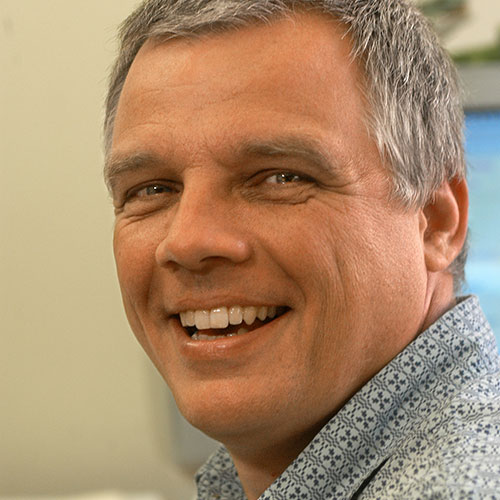Steven Peretti
Bio
Our research is guided by the premise that macroscopic biological behavior can be directly and knowledgeably manipulated for commercial benefit using reactor design and genetic engineering. The key concept in that statement is knowledge of the biological system. We use molecular biology and computer modeling to analyze metabolic regulation and evaluate potential manipulation scenarios.
A developing focus of our work is the construction of microorganisms capable of executing bioconversions that can replace homogeneous and heterogeneous catalytic processes in current industrial use. We believe that eventually, fine chemicals and commodity chemicals will join the list of compounds which undergo significant bioprocessing. Bioconversion offers the advantages of reactant specificity, high product selectivity, low operating temperature and pressure, high product stereoselectivity and minimal generation of hazardous wastes. Implementation of biocatalytic processes will in many cases dramatically reduce the requirement for downstream separation and purification as well. Before such benefits can be realized, issues surrounding low biocatalytic rates, variable enzyme stability, complex pathway regulation and uncertain population dynamics must be addressed. We are currently studying regiospecific oxidation reactions involving single and multi-ring aromatic compounds, which give rise to chiral compounds in many cases.
A second focus involves the design of reactors in which metabolically-active biofilms are maintained while continuously exposed to non-aqueous fluids. This is of great importance in the treatment of contaminated waste streams and in many bioconversion scenarios. We are studying asymmetric porous and non-porous polymer membranes as biofilm supports in such reactors. Single-substrate and mixed-substrate growth scenarios are also being evaluated.
A third research focus is the transfer of genetic sequences in biofilms. Genetically-engineered microorganisms are generally ill-suited to occupy environmental niches outside of the laboratory, yet many of the applications of these organisms are in such settings. It is important, therefore, to understand how plasmids are transmitted and propagated through a heterogeneous population of microbes. In situ cleanup of contaminated waste sites, corrosion prevention in piping systems, prevention of dental caries, and treatment of cystic fibrosis are all examples of established biofilms that exhibit inadequate or deleterious behavior that could be altered by the introduction of specific enzymatic or regulatory activities. We have recently developed and validated a mathematical model of the transfer of plasmids between microorganisms in suspension and established biofilms of Arthrobacter and Pseudomonas.
